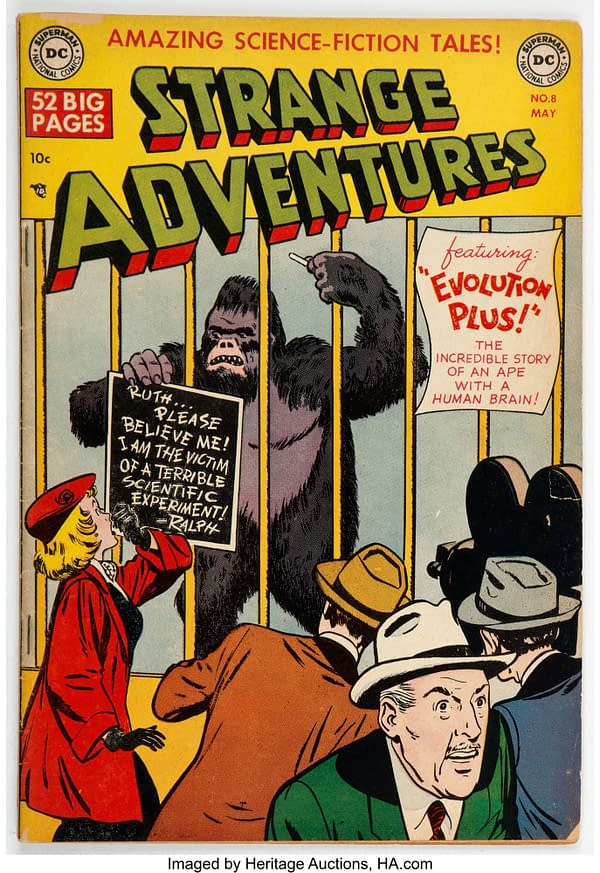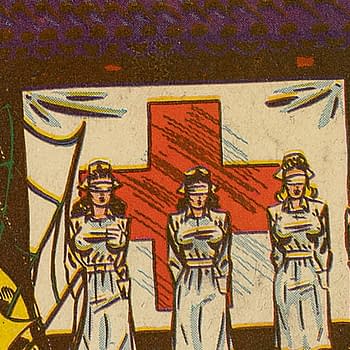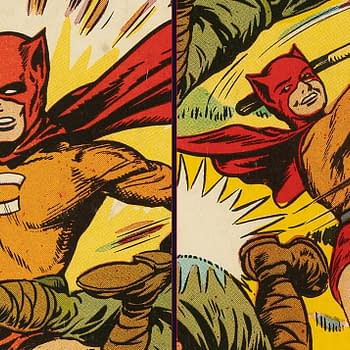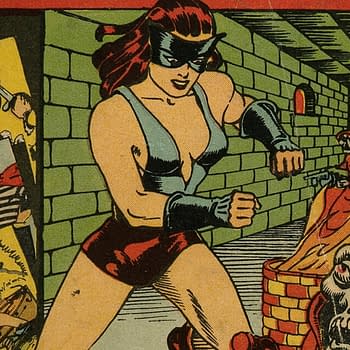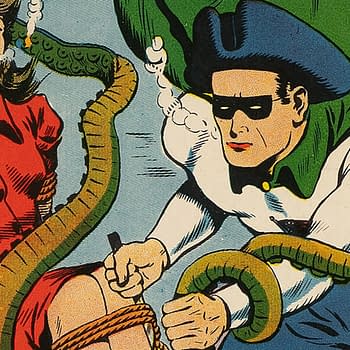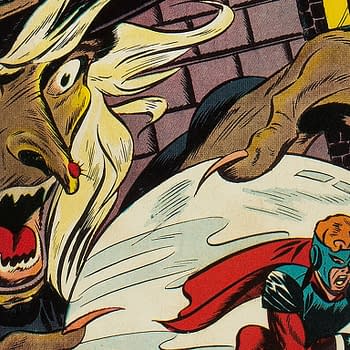Posted in: Comics, Heritage Sponsored, Vintage Paper | Tagged: Julius Schwartz, strange adventures
Rise of the Covers of the Apes in Strange Adventures #8, at Auction
The DC Comics gorilla cover trend began after it was noticed by Irwin Donenfeld that Strange Adventures #8 sold better than usual in 1951.
Article Summary
- Strange Adventures #8 sparked the DC Comics trend of gorilla covers.
- Win Mortimer's cover art and the sales spike led to the "gorilla rule".
- Julius Schwartz and Gil Kane provide insights into the cover trend origins.
Strange Adventures #8 (DC, 1951) is not the first DC comic book that featured a gorilla cover. That distinction belongs to Action Comics #6 (DC, 1938). But Strange Adventures #8 is widely cited as the cover that sparked the gorilla cover mandate at the publisher. The cover of that issue by Win Mortimer is based on the interior story Evolution Plus by Gardner Fox and Bob Oksner, in which a man accidentally uses a "cosmiray evolution machine," and ends up transforming himself into a talking gorilla. Perhaps the most important gorilla cover from a publisher famous for them, there's a Strange Adventures #8 (DC, 1951) Condition: VG up for auction in the 2024 May 30 Adventures in the Golden Age Comics Showcase Auction #40261 up for auction in the 2024 July 14-16 Sunday, Monday & Tuesday Comic Books Select Auction #122429 at Heritage Auctions.
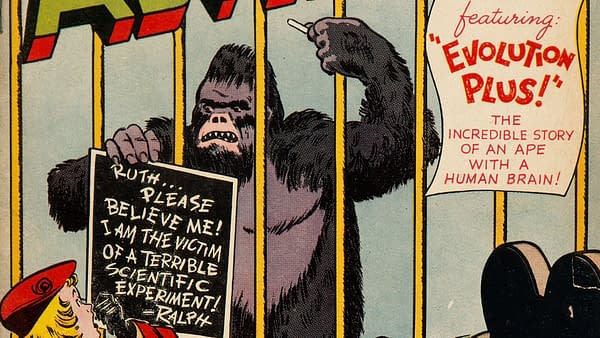
DC Comics editor Julius Schwartz told several interviewers about the genesis of this issue over the years, but the most complete version is perhaps from Comics Interview in 1991: "Well, Strange Adventures was selling slightly above average. The editorial director was Irwin Donenfeld, the son of Harry Donenfeld, … He said, 'Strange Adventures leaped up ten points, a fantastic rise! Why? What happened?' In those days all magazines were sold on the newsstand, there were no direct sales, so if a cover was good enough readers would pick it up. So we looked at the cover which showed a gorilla in a cage in a zoo. The people outside the cage were looking in at this gorilla, and this gorilla had a slate in his hand and he had written in chalk, 'Please help me, I am the victim of a horrible scientific experiment…' So we tried to figure it out, and I said, 'Well, the way I see it is the issue went over well because the gorilla was acting like a human.' And every gorilla cover I did from then on was not a straight gorilla cover, he was acting like a human."
Artist Gil Kane expanded on the matter for the book Comics, Between the Panels, noting that Irwin Donenfeld "just looked at statistics and sales figures. He had a graph where he determined that gorillas sell, fire sells, earth sells, jail cells sell. So we would have various combinations of gorillas in cells with fire behind them. I did some gorilla covers and some earth covers, and the next thing I knew I was doing gorillas with earth covers. He would insist on these elements; he used to keep minature examples of the covers so he could compare them."
As with any widely-repeated historical legend, the legend of the gorilla covers takes a little bit of unraveling. Enough people who were there discussed the matter on the record to suggest that the gorilla cover mandate is true, but it seems to have taken time to unfold. While most sources say that Irwin Donenfeld did not become Editorial Director until 1952, we know from the publicly available pages of the "miniature examples of covers" he kept in a notebook, which also included sales figures, that he was tracking covers and sales in this matter as early as 1950, which enables a number of scenarios.
Most of Schwartz's versions of this story suggest that the sales spike for Strange Adventures #8 (on sale around April 4, 1951) was noted and discussed shortly after sales figures became available, which would certainly make sense. But the next gorilla cover appeared nine months later on Big Town #14, and the next appeared 11 months after that on Batman #75, which hit newsstands at the end of 1952. No doubt, the time for final sales figures to come in, plus the time between art assignments and publication, accounted for some portion of those gaps. And likely, it took Irwin Donenfeld some time and effort to get the editors on board as well. The gorilla cover trend slowly built momentum after that point, and other DC Comics editors jumped on the trend as well.
DC Comics gorilla covers are a historical trend that continues to be remembered fondly to this day. The comic book that started the trend, Strange Adventures #8, is up for auction in the 2024 July 14-16 Sunday, Monday & Tuesday Comic Books Select Auction #122429 at Heritage Auctions.
